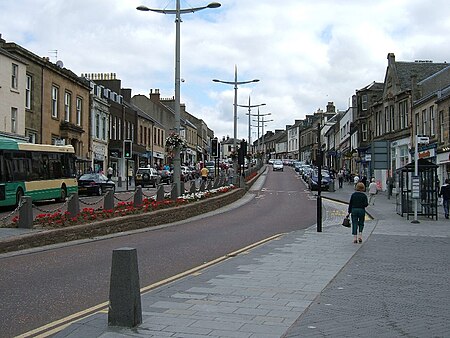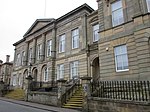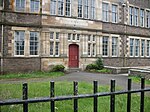Lanark

Lanark (; Scottish Gaelic: Lannraig [ˈl̪ˠaun̪ˠɾɪkʲ]; Scots: Lanrik) is a town in South Lanarkshire, Scotland, located 20 kilometres to the south-east of Hamilton. The town lies on the River Clyde, at its confluence with Mouse Water. In 2016, the town had a population of 9,050. Lanark has been a royal burgh since 1140, and was historically the county town of Lanarkshire, though in modern times this title belongs to Hamilton. Notable landmarks nearby include New Lanark, the Corra Linn and the site of Lanark Castle. Lanark railway station and coach station have frequent services to Glasgow. There is little industry in Lanark and some residents commute to work in Glasgow and Edinburgh. Its shops serve the local agricultural community and surrounding villages. There is a large modern livestock auction market on the outskirts of the town.
Excerpt from the Wikipedia article Lanark (License: CC BY-SA 3.0, Authors, Images).Lanark
Gallowhill Road,
Geographical coordinates (GPS) Address Nearby Places Show on map
Geographical coordinates (GPS)
| Latitude | Longitude |
|---|---|
| N 55.674903 ° | E -3.777019 ° |
Address
Tesco
Gallowhill Road
ML11 7AG
Scotland, United Kingdom
Open on Google Maps







